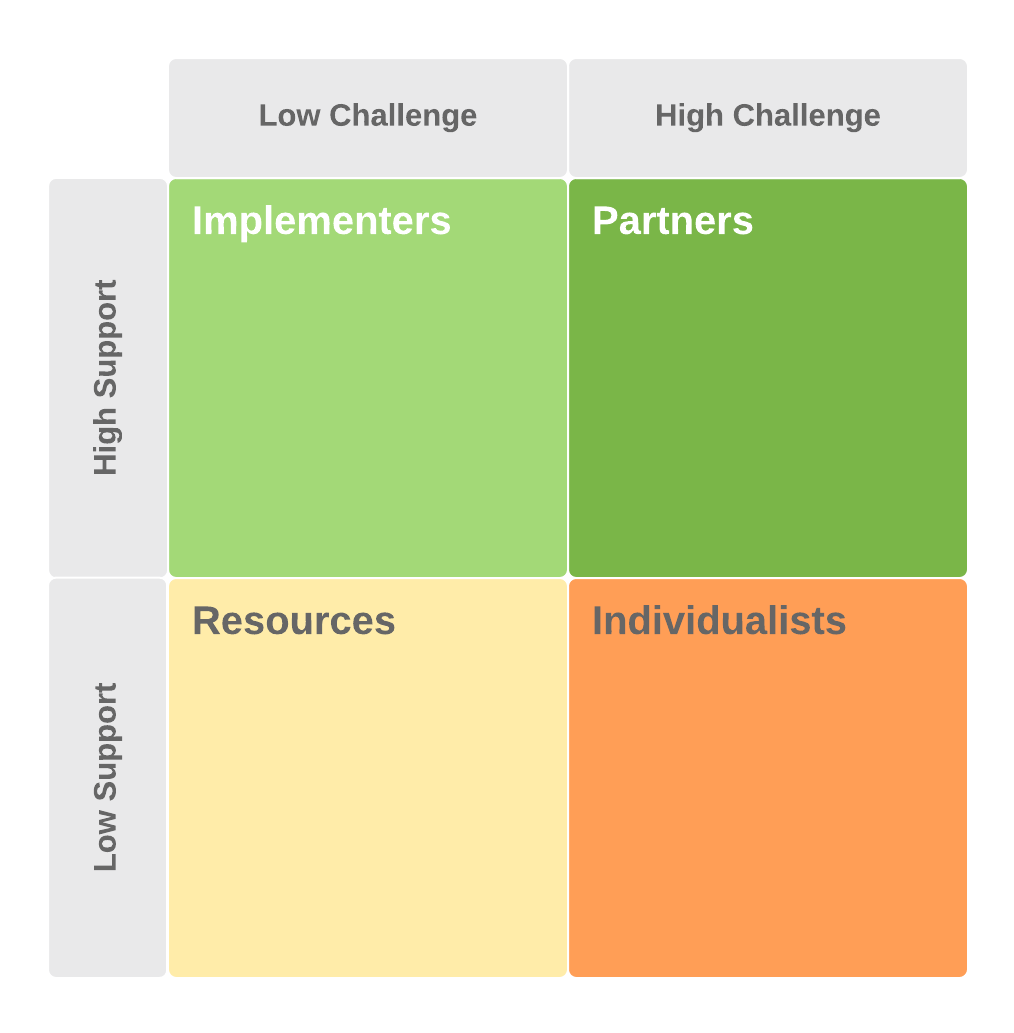"Leadership" is the thing these days - ones able to get others moving, ones who act as a multiplier to others' work (due to leverage effect they make), ones that do inspire their peers & actively shape the culture around them - they are worth their weight in gold.
But while we speak a lot about leaders and their characteristics, there's also the other side of the equation - the followers. It's more than obvious that different people do react in a different way (to a leader) - not everyone is equally eager is trust, collaborate, adjust, contribute & ... yes, follow. I had my way of thinking about that, but recently I've encountered a very simple, yet useful conceptual model - it's described by Jason Wong in Camille Fournier's recent book - "97 Things Every Engineering Manager Should Know" & it's called Ira Chaleff's typology of followership (after it's creator - more details in this book).
OK, so what is it about?
Imagine the 2D space where the dimensions have the following meaning:
- axis X - is a measure of followers' support to their leader
- axis Y - is how much they challenge her/him in her/his leadership

Such a plane can be conceptually split into 4 sub-areas:
- low support, low challenge - RESOURCES - ones who do what you tell them to, but that's about it - they are generally passive and do not challenge their leader in any way
- high support, low challenge - IMPLEMENTERS - ones who do the heavy lifting - they do believe in the direction set, they do treat the mission as theirs, but they are not leaders (in any way) themselves: committed & dedicated, but always need a navigator to guide them
- low support, high challenge - INDIVIDUALISTS - usually not a very numerous, but a troublesome group - people who always do have their opinion & who'll just do their way - because they "know better" and can't be persuaded otherwise; adherence is just beyond them
- high support, high challenge - PARTNERS - ones who whilst respecting the leader, do co-operate on fair & open terms; they adhere to the vision set & overall direction, but still do challenge it when needed & up-to-the reasonable level/degree
See? I told you it's simple, but it covers 90% of classification needs :)
Each of the groups mentioned has a different impact on the organization (& the leader) and needs a different treatment. Obviously, it's virtually impossible to turn everyone into a PARTNER, but one should pay a lot of attention in having proper ratios between various groups, e.g.:
- INDIVIDUALISTS can be extremely disruptive, especially when completely loose out of control, un-contained & left with space for impact on a significant number of people; the best resolution is to find common ground and turn individualists into partners - if this does not work, it's the highest time to part ways
- RESOURCES are problematic in large numbers - w/o sufficient "face-time" (& guidance "injection") they drift and dissolve the organisation's culture - the best way to deal with that issue is to have a "sergeant" PARTNER dedicated to working with some of them directly all the time
- IMPLEMENTERS are of course not an issue per se - it's just that an organisation with only implementers but no partners is very fragile, because of being over-dependent on a single leader's vision; it can lead to great boost of efficiency short-term, but some creative conflict is also essential long-term
I've found this conceptual model really helpful, especially when entering the new environment & assessing the overall situation from a new-hire leader perspective.








